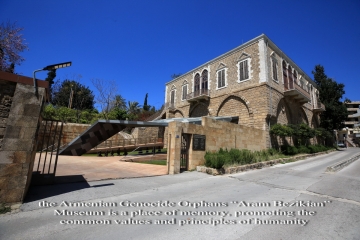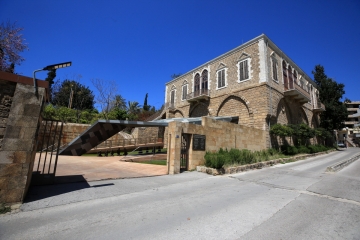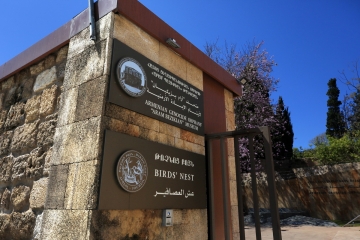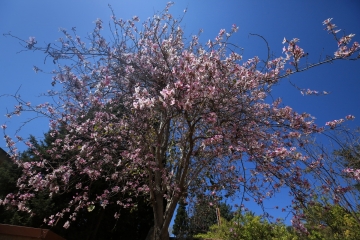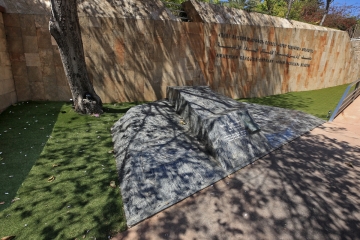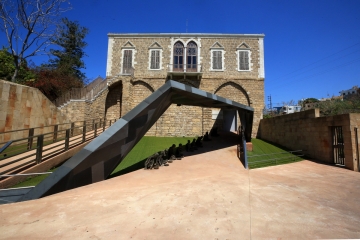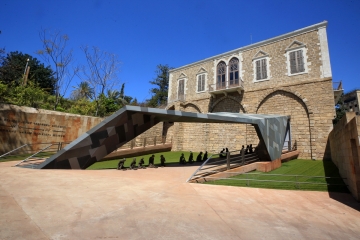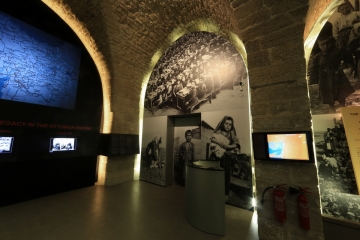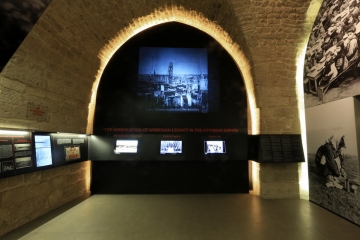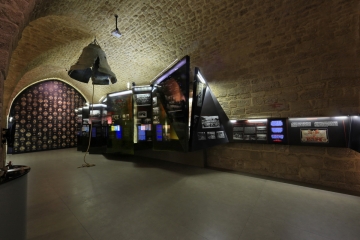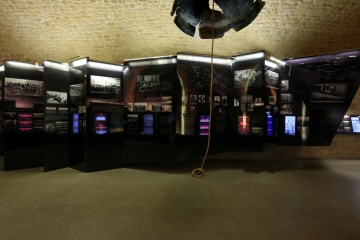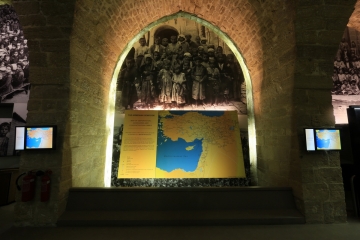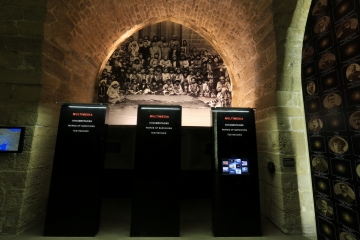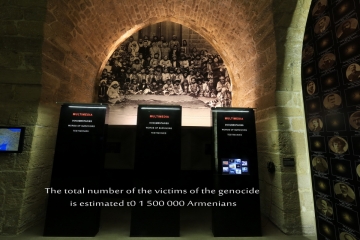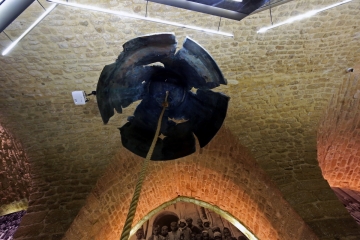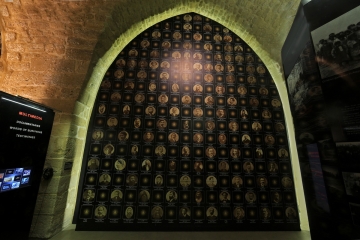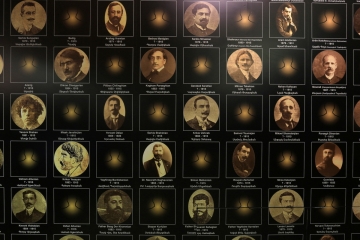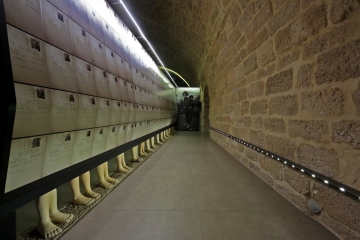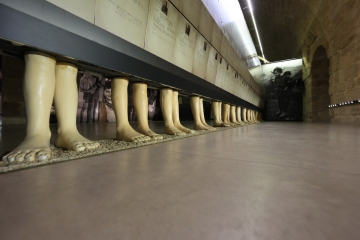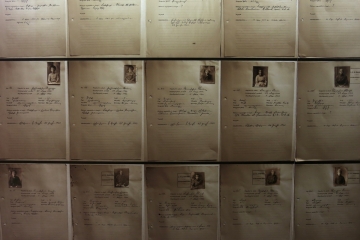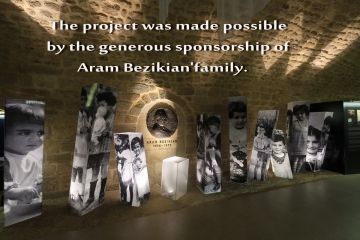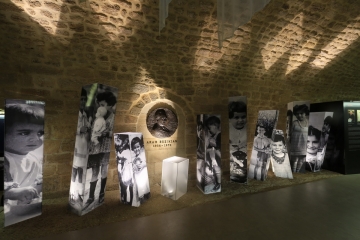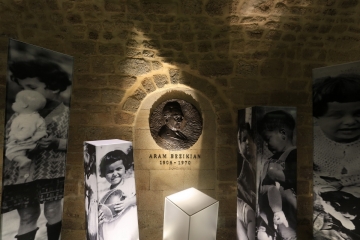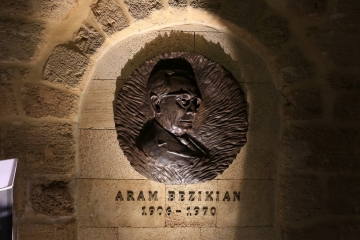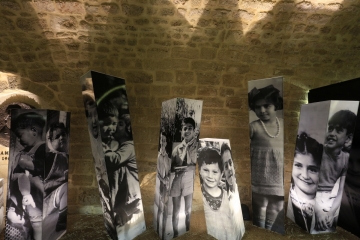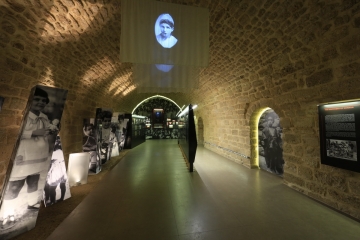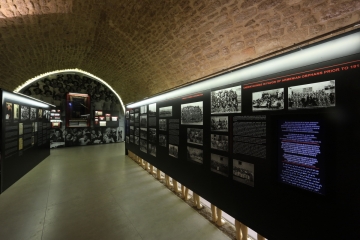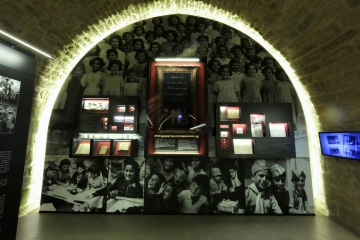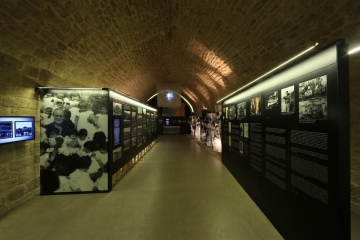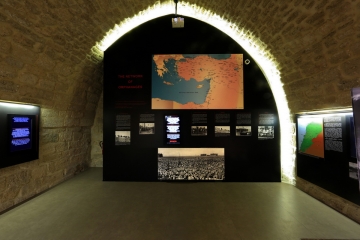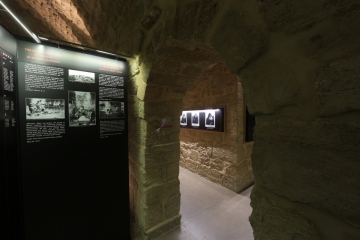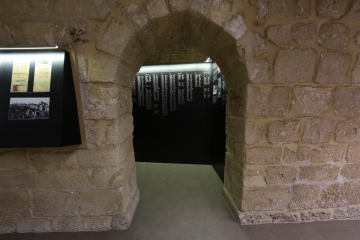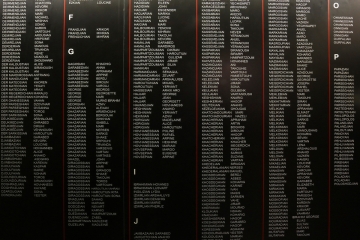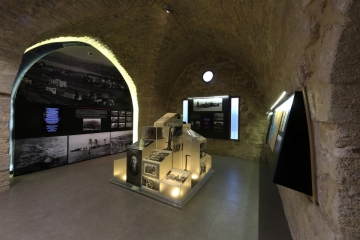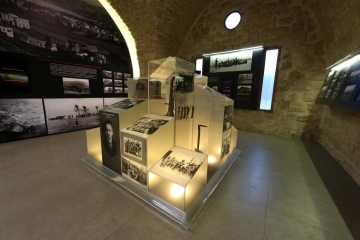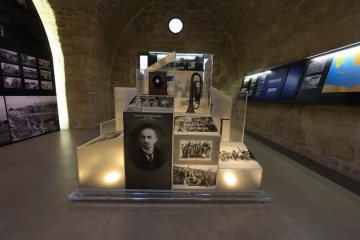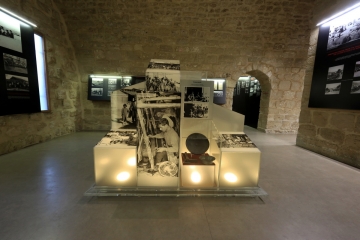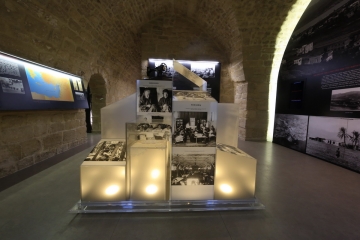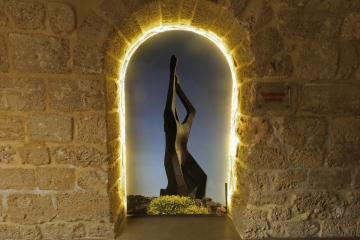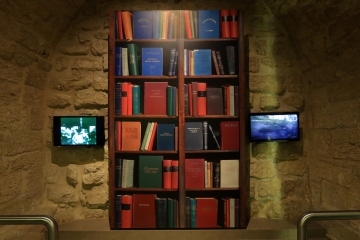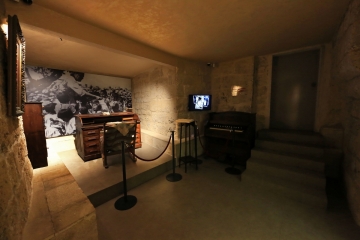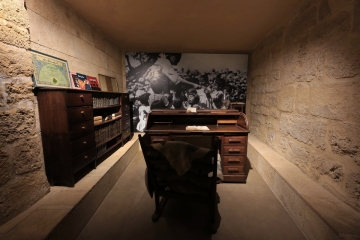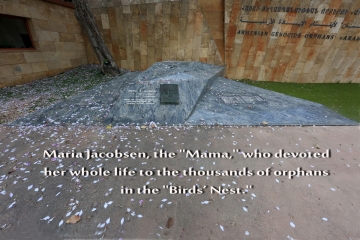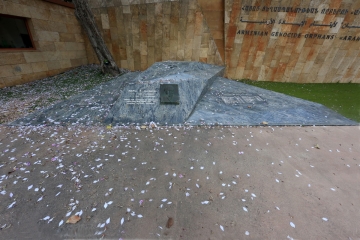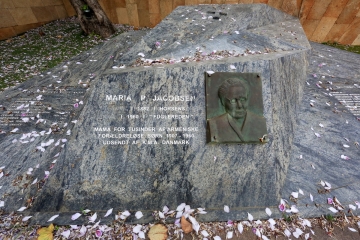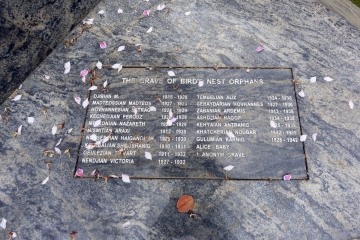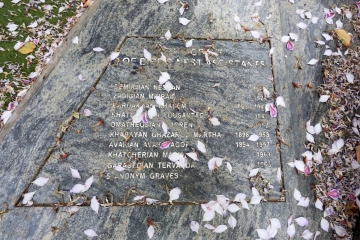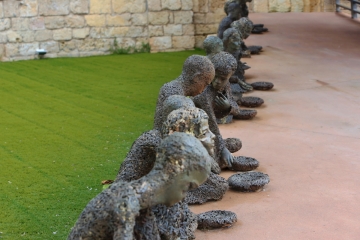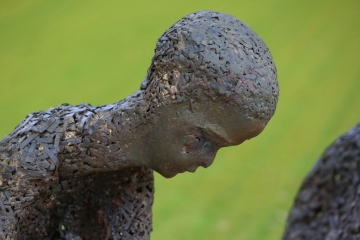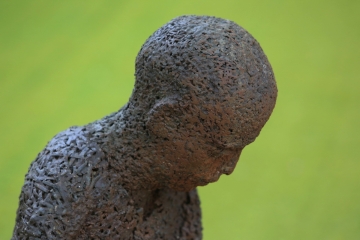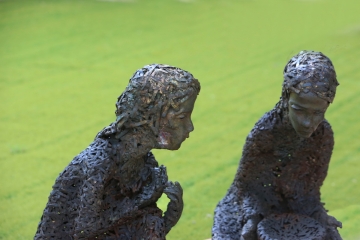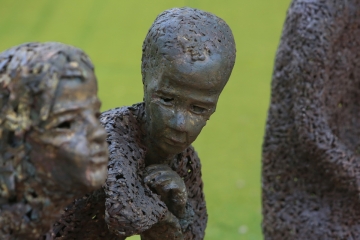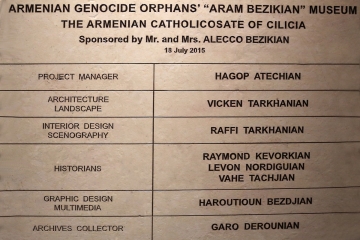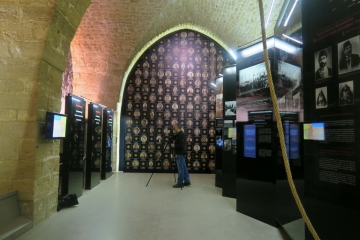Armenian Genocide Museum
Located in Byblos, the museum is a place of memory which aims to promote the common values & principles of humanity. As part of its remembrance activities on the occasion of the commemoration of the centennial of the Armenian Genocide, the Catholicosate of the Great House of Cilicia has commissioned the building of this cultural facility. Thanks to the sponsorship of the Bezikian family.
A Space of Memory
Located at the heart of the ancient site of Jbeil (Byblos), not far from the 12th century citadel, the Armenian Genocide Orphans “Aram Bezikian” Museum is a place of memory, promoting the common values and principles of humanity: concern for others, friendship and tolerance, peaceful coexistence and respect for human rights and human dignity.
On the occasion of the centennial commemorations of the Armenian Genocide, as part of its commemorative initiatives, the Armenian Catholicosate of the Great House of Cilicia created the Orphan’s Museum, the first in the diaspora, on the premises of the Armenian Orphanage of Jbeil, known as the "Birds’ Nest.” This project was made possible by the generous sponsorship of the Bezikian family.
The Museum features three exhibits. The first presents the life of Armenians in the Ottoman Empire on the eve of the First World War and the genocide perpetrated against the Armenians by the Ottoman Turkish government in 1915 and 1916. The second dramatizes the role of the various non-governmental organizations (NGOs) and western missionaries that helped resettle the surviving orphans in the Middle East, particularly in Lebanon. The third exhibit shows the rehabilitation and settlement of the orphans into their new home in Lebanon. A specific scene is dedicated to the story of Maria Jacobsen, the "Mama," who devoted her whole life to the thousands of orphans in the "Birds’ Nest."
Un espace de mémoire
Situé au cœur du site antique de Jbeil (Byblos), non loin de la citadelle du XIIe siècle, le musée «Aram Bezikian» des orphelins du génocide arménien est un lieu de mémoire, valorisant les valeurs et principes communs de l'humanité: souci des autres , l'amitié et la tolérance, la coexistence pacifique et le respect des droits de l'homme et de la dignité humaine.
A l'occasion des commémorations du centenaire du génocide arménien, dans le cadre de ses initiatives commémoratives, le Catholicossat arménien de la Grande Maison de Cilicie a créé le Musée de l'Orphelin, le premier de la diaspora, dans les locaux de l'Orphelinat arménien de Jbeil, connu sous le nom de "nid d'oiseau". Ce projet a été rendu possible grâce au généreux parrainage de la famille Bezikian.
Le Musée présente trois expositions. Le premier présente la vie des Arméniens dans l'Empire ottoman à la veille de la Première Guerre mondiale et du génocide perpétré contre les Arméniens par le gouvernement turc ottoman en 1915 et 1916. Le second dramatise le rôle des différentes organisations non gouvernementales (ONG ) et des missionnaires occidentaux qui ont aidé à réinstaller les orphelins survivants au Moyen-Orient, en particulier au Liban. La troisième exposition montre la réhabilitation et l'installation des orphelins dans leur nouvelle maison au Liban. Une scène spécifique est consacrée à l'histoire de Maria Jacobsen, la "Mama", qui a consacré toute sa vie aux milliers d'orphelins du "Nid d'oiseau".
موقع للذاكرة
يقع متحف "آرام بزيكيان" لأيتام الإبادة الأرمنيّة في قلب مدينة جبيل الأثريّة، على مقربةٍ من القلعة الصّليبيّة
يُشكّل المتحف مكانًا للذّاكرة ويهدف إلى تعزيز القِيَم والمُثُل الإنسانيّة: أخلاقيّات الاهتمام بالآخرين، الصّداقة والتّسامح، التّعايُش السّلميّ واحترام حقوق وكرامة الإنسان.
بمناسبة الاحتفال بالذّكرى المئويّة للإبادة الجَمَاعيّة الأرمنيّة، نفّذت كاثوليكوسيّة الأرمن لبيت كيليكيا، وذلك ضمن سياستها التّذكاريّة، هذا المتحف الفريد من نوعه، في أرجاء دار أيتام الأرمن المعروف باسم "عشّ العصافير". وقد تحقّق إنشاؤه بفضل عائلة بزيكيان.
يتألّف المتحف من ثلاثة أقسامٍ. يَعرِضُ القسم الأوّل حياة الأرمن في ظلّ الإمبراطوريّة العثمانيّة عشيّة الحرب العالميّة الأولى، تليها الإبادة الجَماعيّة (1915).
أمّا القسم الثّاني فهو مخصّص للأيتام والنّاجين، جمعتهم المنظّمات الغير حكوميّة في مراكز استقبالها في الشّرق الأوسط وخاصّةً لبنان.
ويلخّص القسم الثّالث إعادة تأهيل النّاجين لحياتهم الجديدة في مخيّمات مخصّصة لهم حتّى استقرارهم النّهائيّ في لبنان.
وقد خُصّصت مساحةٌ، في آخر المتحف، للمنظّمات الغير حكوميّة وبالأخصّ لماريا جاكوبسون الملقّبة بال "ماما"، الّتي كرّست حياتها كلّها للأيتام في عشّ العصافير.
